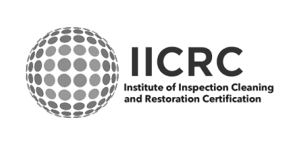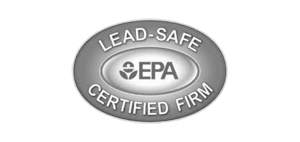Dealing with the aftermath of a flood can be overwhelming, but knowing what needs to be cleaned up is essential for a successful recovery.
Key Takeaways:
- Remove carpet, furniture, and stuffed animals that came into contact with floodwaters.
- Dry out flooded areas within 48 hours to prevent mold growth.
- Dispose of wet materials that cannot be cleaned.
- Take photos of damaged property for insurance purposes.
- Wash curtains, clothing, and bedding with hot soapy water and bleach.
Steps for Post-Flood Clean-up
When it comes to cleaning up after a flood, following a structured approach is crucial to ensure thorough restoration and minimize potential risks. Here are the key steps you should take:
- Remove carpet, upholstered furniture, and stuffed animals that may have come in contact with contaminated floodwaters. These items can harbor bacteria and mold, posing health hazards.
- Dry out any flooded areas within 48 hours to prevent mold growth. Use fans, dehumidifiers, and open windows to increase airflow and aid in the drying process.
- Throw away wet materials that cannot be cleaned effectively. This includes items such as mattresses, pillows, and particleboard furniture that may absorb water and become breeding grounds for mold.
- Take photographs of all damaged property for insurance purposes. This documentation will support your claim and help ensure fair compensation for the flood damage.
To effectively clean and salvage items after a flood, follow these additional steps:
- Wash curtains, clothing, and bedding with hot soapy water, and use bleach whenever possible. This helps kill bacteria and remove any contaminants.
- Flush rugs and furniture with clean water, shampoo them, and air-dry them thoroughly. This will eliminate dirt, debris, and potential mold.
- Wear protective clothing, gloves, goggles, and an N-95 mask when working in flooded areas or cleaning mold. These precautions will safeguard your health from harmful substances.
- Use soap or cleaning products with a disinfectant for killing germs, and never mix bleach with other cleaning supplies. Follow the manufacturer’s instructions for proper use.
- Open windows and use fans to pull fumes from the work area. Mist down areas to contain dust when sweeping to minimize respiratory irritants.
- Wash hands thoroughly with soap and warm water or an alcohol-based hand sanitizer after cleaning. This helps prevent the spread of bacteria and viruses.
- Make sure to dry flooded areas thoroughly, as damp areas can promote mold growth. Use dehumidifiers, fans, and open windows to facilitate drying.
- Pump water out into your yard or stormwater drain pipes, instead of the sewer system. This prevents further contamination of water sources.
If there is a large amount of mold or flood damage, it may be necessary to hire a professional for cleanup. People with asthma, allergies, or other breathing problems should consult with a medical provider before cleaning up after a flood.
| Step | Action |
|---|---|
| 1 | Remove carpet, upholstered furniture, and stuffed animals |
| 2 | Dry out flooded areas within 48 hours |
| 3 | Discard wet materials that cannot be cleaned |
| 4 | Take photographs of damaged property |
| 5 | Wash curtains, clothing, and bedding |
| 6 | Flush rugs and furniture |
| 7 | Wear protective clothing, gloves, goggles, and mask |
| 8 | Use cleaning products with disinfectant |
| 9 | Open windows and use fans |
| 10 | Wash hands thoroughly after cleaning |
| 11 | Dry flooded areas thoroughly |
| 12 | Pump water out into yard or stormwater drain pipes |
Tips for a Safe and Effective Clean-up
While cleaning up after a flood, it’s important to take necessary precautions to ensure your safety and prevent further damage. Here are some helpful tips:
- Remove carpet, upholstered furniture, and stuffed animals that may have come in contact with contaminated floodwaters. These items can harbor bacteria and pose a health risk.
- Dry out any flooded areas within 48 hours to prevent mold growth. Use fans and dehumidifiers to promote airflow and speed up the drying process.
- Throw away wet materials that cannot be cleaned, such as cardboard boxes, books, and mattresses. These items can quickly become breeding grounds for mold and are best to be discarded.
- Take photographs of all damaged property for insurance purposes. This will help with the claims process and ensure you receive proper compensation for your losses.
- Wash curtains, clothing, and bedding with hot soapy water, and bleach them whenever possible. This will help kill any bacteria or mold spores that may have contaminated these items.
In addition to these steps, it’s essential to wear protective clothing, gloves, goggles, and an N-95 mask when working in flooded areas or cleaning mold. These precautions will protect you from harmful contaminants and allergens. It’s also important to use cleaning products with disinfectant properties to kill germs, and never mix bleach with other cleaning supplies, as it can create toxic fumes.
Other Tips to Consider:
- Open windows and use fans to pull fumes from the work area, and mist down areas to contain dust when sweeping. This will help improve ventilation and minimize the spread of dust and debris.
- Wash hands thoroughly with soap and warm water or an alcohol-based hand sanitizer after cleaning. This will help eliminate any lingering bacteria or contaminants.
- Make sure to dry flooded areas thoroughly, as damp areas can promote mold growth. Use dehumidifiers and fans to ensure proper drying.
- Pump water out into your yard or stormwater drain pipes, instead of the sewer system. This will help prevent overwhelming the sewage system and potential contamination of water sources.
If there is a large amount of mold or flood damage, it may be necessary to hire a professional for cleanup. People with asthma, allergies, or other breathing problems should consult with a medical provider before cleaning up after a flood to ensure their safety.
| Precautions | Actions |
|---|---|
| Wear protective clothing, gloves, goggles, and an N-95 mask | Protect yourself from harmful contaminants and allergens |
| Use cleaning products with disinfectant properties and avoid mixing bleach with other cleaning supplies | Kill germs effectively and prevent the creation of toxic fumes |
| Open windows, use fans, and mist down areas when sweeping | Improve ventilation and minimize the spread of dust and debris |
| Wash hands thoroughly with soap and warm water or sanitizer | Eliminate lingering bacteria and contaminants |
| Dry flooded areas thoroughly with dehumidifiers and fans | Prevent mold growth by eliminating dampness |
| Pump water out into your yard or stormwater drain pipes | Avoid overwhelming the sewer system and potential water contamination |
Conclusion
Cleaning up after a flood is a challenging task, but by following the proper steps and taking necessary precautions, you can restore your property and ensure a safer environment.
After a flood, it is important to clean up the affected areas to remove hazards and prevent problems from mold. To begin, remove carpet, upholstered furniture, and stuffed animals that may have come in contact with contaminated floodwaters. These items can harbor bacteria and become breeding grounds for mold.
Drying out any flooded areas within 48 hours is crucial in preventing mold growth. Use fans, open windows, and dehumidifiers to speed up the drying process. It’s also important to throw away any wet materials that cannot be thoroughly cleaned to avoid the risk of mold contamination.
When cleaning up after a flood, make sure to wear protective clothing, gloves, goggles, and an N-95 mask, especially when working in flooded areas or cleaning mold. This will help protect you from harmful contaminants and mold spores. Use soap or cleaning products with a disinfectant for killing germs, and avoid mixing bleach with other cleaning supplies.
Remember to take photographs of all damaged property for insurance purposes. Additionally, wash curtains, clothing, and bedding with hot soapy water, and bleach them whenever possible. Flush rugs and furniture with clean water, shampoo, and air-dry them to remove any remaining contaminants.
Finally, it’s important to properly dispose of the water used during clean-up. Pump the water out into your yard or stormwater drain pipes instead of the sewer system. This will prevent further contamination and potential damage to the sewage system.
If you are facing a large amount of mold or flood damage, it may be necessary to hire a professional for cleanup. People with asthma, allergies, or other breathing problems should consult with a medical provider before cleaning up after a flood to ensure their safety.
By following these steps, you can effectively clean up after a flood and protect your property and health. Remember to prioritize safety and seek professional help when needed. Together, we can overcome the challenges of post-flood clean-up and restore our homes to a safer, healthier state.
FAQ
What items should be removed after a flood?
Carpet, upholstered furniture, and stuffed animals that may have come in contact with contaminated floodwaters should be removed.
How long do you have to dry out flooded areas to prevent mold growth?
Flooded areas should be dried out within 48 hours to prevent mold growth.
What should be done with wet materials that cannot be cleaned?
Wet materials that cannot be cleaned should be thrown away.
Is it necessary to take photographs of damaged property for insurance purposes?
Yes, it is important to take photographs of all damaged property for insurance purposes.
How should curtains, clothing, and bedding be washed after a flood?
Curtains, clothing, and bedding should be washed with hot soapy water, and bleach should be used whenever possible.
How should rugs and furniture be cleaned after a flood?
Rugs and furniture should be flushed with clean water, shampooed, and air-dried.
What protective gear should be worn when working in flooded areas or cleaning mold?
Protective clothing, gloves, goggles, and an N-95 mask should be worn when working in flooded areas or cleaning mold.
What cleaning products should be used to kill germs?
Soap or cleaning products with a disinfectant should be used to kill germs. It is important to never mix bleach with other cleaning supplies.
What should be done to minimize fumes and dust during clean-up?
Windows should be opened, fans should be used to pull fumes from the work area, and misting down areas can help contain dust when sweeping.
How should hands be cleaned after cleaning?
Hands should be thoroughly washed with soap and warm water or an alcohol-based hand sanitizer after cleaning.
Why is it important to dry flooded areas thoroughly?
Damp areas can promote mold growth, so it is important to dry flooded areas thoroughly.
Where should water be pumped out after a flood?
Water should be pumped out into the yard or stormwater drain pipes, instead of the sewer system.
When is it necessary to hire a professional for post-flood clean-up?
If there is a large amount of mold or flood damage, it may be necessary to hire a professional for clean-up.
Who should consult with a medical provider before cleaning up after a flood?
People with asthma, allergies, or other breathing problems should consult with a medical provider before cleaning up after a flood.









